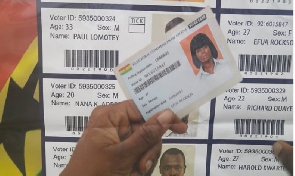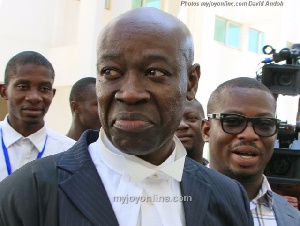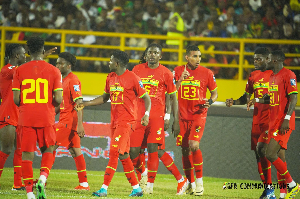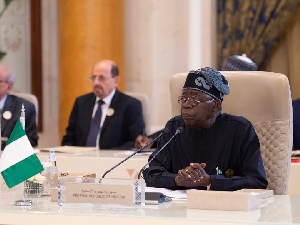According to data released by the Electoral Commission, nearly 17 million Ghanaians have registered to vote in the upcoming December 7th presidential and parliamentary elections. At the end of the registration exercise, the Electoral Commission registered 16,963,306 people on the new voters register. The breakdown of the register by gender reveals there were more female registered voters ( 52.46%) than male registered voters (47.54%).
A regional breakdown puts Greater Accra Region on top of all the regions with the highest number of registered voters, 3,509,805, followed by the Ashanti Region with the second highest number of registered voters, 3,013,856.
This is followed by Eastern Region with 1,628,180 registered voters, Central Region with 1,566,061 registered voters, Western Region with 1,185,315 registered voters and Northern Region with 1,047,539 registered voters.
The remaining regions are Volta with 929,322, Upper East with 653,730, Bono with 648,408, Bono East with 592,015, Upper West with 470,271, Western North with 465,444, Oti with 353,492, Ahafo with 315,827, Savannah with 295,648 and North East with 295, 648 registered voters respectively.
This paper will be based on the ranking of all the 275 constituencies in the country by the number of registered voters from the highest (Dome/Kwabenya) to the lowest (Akatsi North) and focus on constituency ranking in the Eastern Region for analysis.
The constituency rankings are placed into five groups of 55 constituencies each, which are referred to as quintiles. In this way, the first quintile will contain the first 55 constituencies with the highest number of registered voters, the second quintile will contain the next 55 constituencies and so on.
Based on Electoral Commission’s data for the Eastern region, the results reveal that New Juaben South Constituency, which includes the Eastern Regional Capital Koforidua, recorded the highest number of registered voters in the Region.
This is followed by Nsawam-Adoagyiri in the first quintile and Nkawkaw, Lower ManyaKrobo, Suhum, Kade, Akropong Akwapim, YiloKrobo, and Lower West Akim (Asamankese) in that order in the second quintile.
The New Juaben South Constituency, recorded over 90,000 voters with 90,627 registered voters in the Eastern Region. This ranks the Constituency in the 41st position among the 275 constituencies in the country. It also places the Constituency in the first and topmost quintile category of 55 constituencies with the highest number of registered voters across the nation.
As a comparison, the Abuakwa South Constituency, which includes the capital of Akyem Abuakwa paramountcy Kyebi, recorded over 50,000 voters with 50,986 registered voters. It is ranked 156th among the constituencies in the country in terms of the number of registered voters and placed in the 3rd quintile category.
The above analysis excludes New Juaben North Constituency which recorded over 42,000 voters with 42,492 registered voters. Therefore, the New Juaben Traditional Area, comprising New Juaben North and South Constituencies, has a total of over 113,000 voters or 113,119 registered voters.
The cumulative registered voters of the first six largest constituencies in Akyem Abuakwa, namely, Nsawam-Adoagyiri, Suhum, Kade, Lower West Akim, Upper West Akim and Ayensuano is below the voting power of 400,000 at 394,227 registered voters.
However, the cumulative registered voters of the first six largest Non-Akyem constituencies in the Eastern Region, namely, New Juaben South, Nkawkaw, Lower ManyaKrobo, Akropong, YiloKrobo and Asuogyaman is above the voting power of 400,000 at 422,950 registered voters.
There are 16 Akyem Abuakwa constituencies out of the 33, namely, Nsawam-Adoagyiri, Suhum, Kade, Lower West Akim, Upper West Akim, Ayensuano, Abuakwa South, Akwatia, OfoaseAyirebi, Abirem, Abuakwa North, Atiwa East, Atiwa West, Fantiakwa North, Achiase and Fanteakwa South.
From the Table, the total number of registered voters in all the sixteen Akyem Abuakwa constituencies in the Eastern Region is 783,943. This figure falls short of the fifty percent majority threshold of 814,090 which is half the total number of registered voters of 1,628,180 in the Eastern Region given by the Electoral Commission.
The total registered voters in all the sixteen Akyem Abuakwa Constituencies is 783,943/(1,628,180)100=48.1percent of the total registered voters in the Eastern Region.
This clearly puts all the Akyem Abuakwa Constituencies in the minority in terms of the voting power of the registered number of voters in the Eastern Region of Ghana.
The total registered voters in Akyem Abuakwa also represents 4.6 percent of the national electorate of 16,963,306.
Lessons to be drawn from the paper
The paper is being concluded by delineating the lessons emanating from the findings in the following postulates:
a). That no single ethnic group in the country can muster political power without support from other groups.
b). That all groups in the Eastern region need to work together for mutual development.
c). That there is the need for unity among all groups in the country to ensure long lasting stability and national cohesion, and
d). That the political gamesmanship in the country should focus more on inclusion with diversity, which matters most rather than exclusion with any semblance of dominance, since in the final analysis inclusion with diversity wins.
Osei K. Darkwa, Ph.D.
Visiting Professor, University of Illinois, Chicago.
Opinions of Wednesday, 14 October 2020
Columnist: Osei K. Darkwa



















